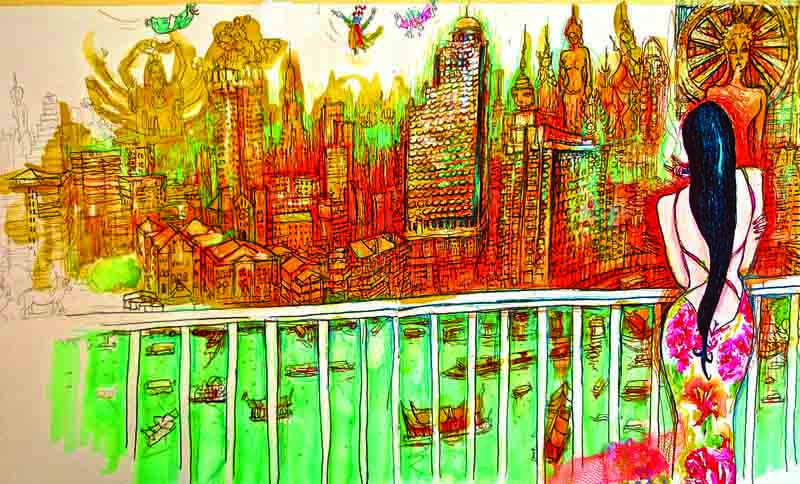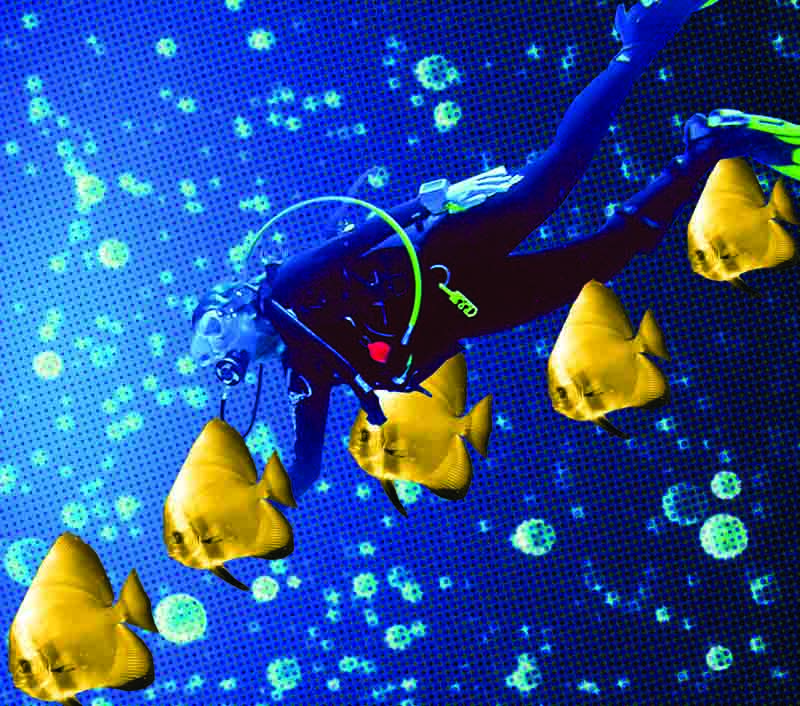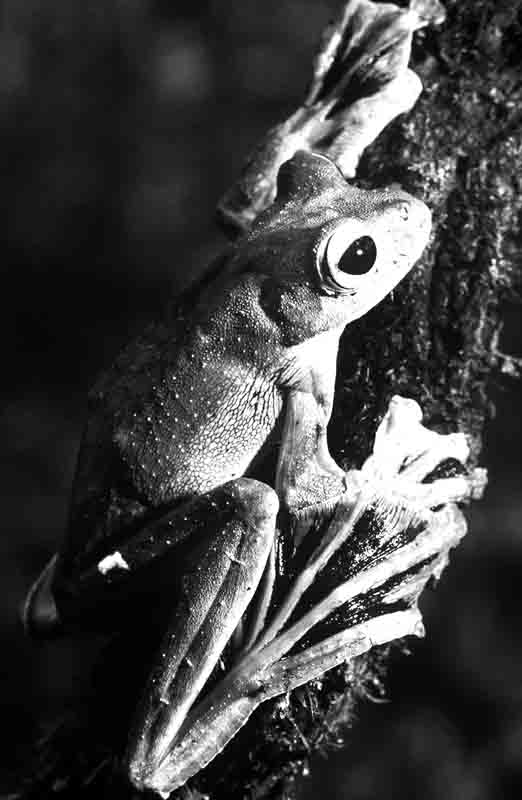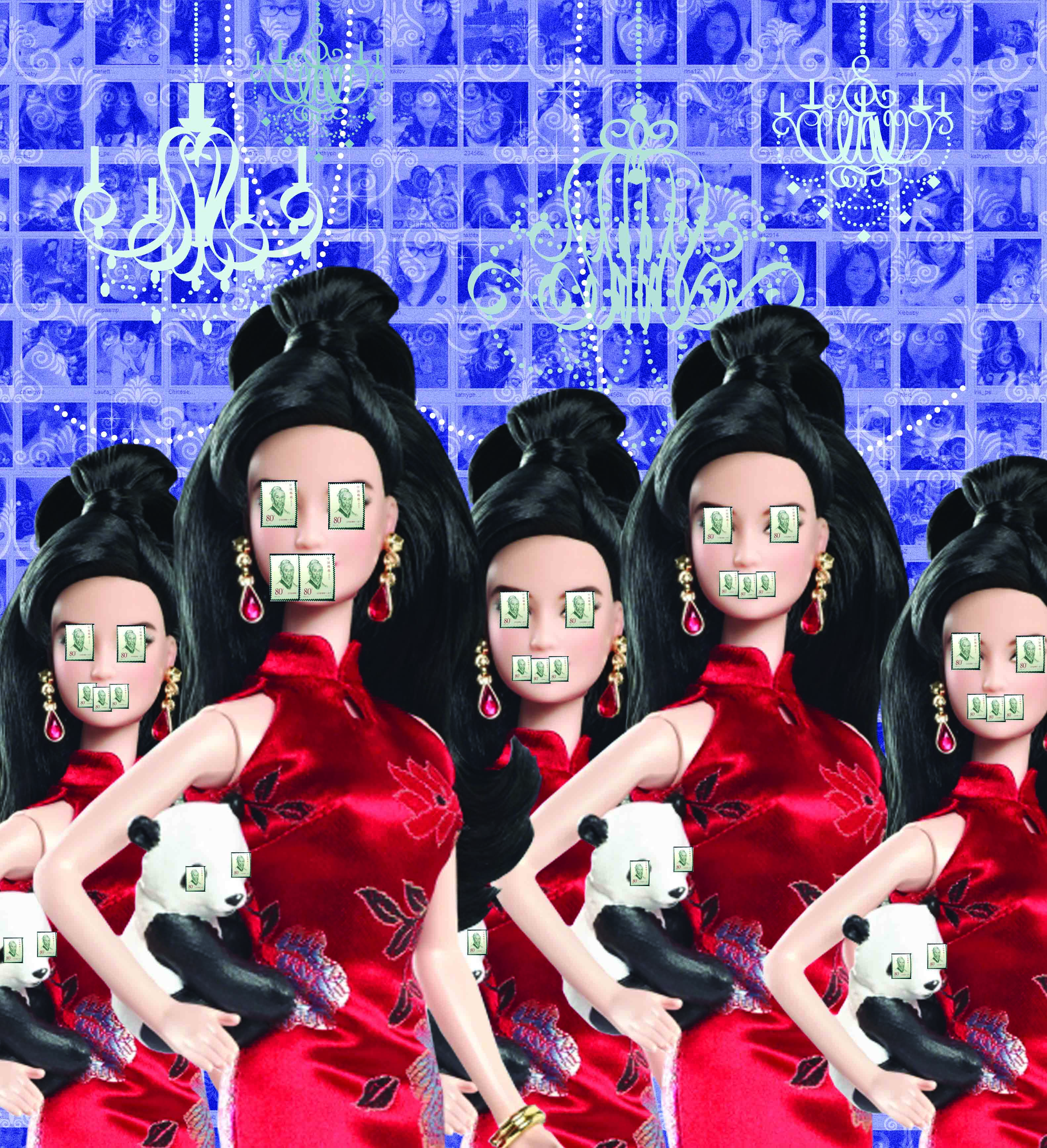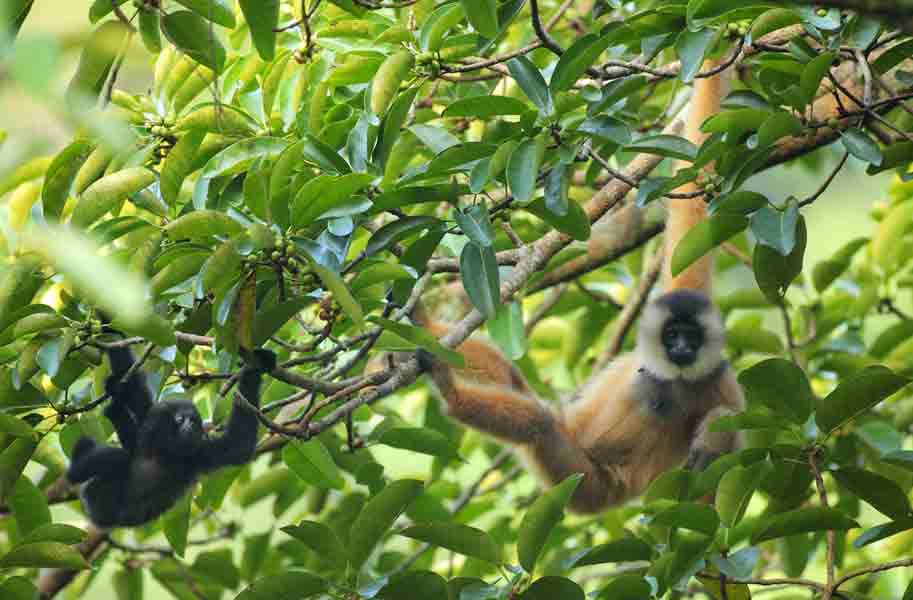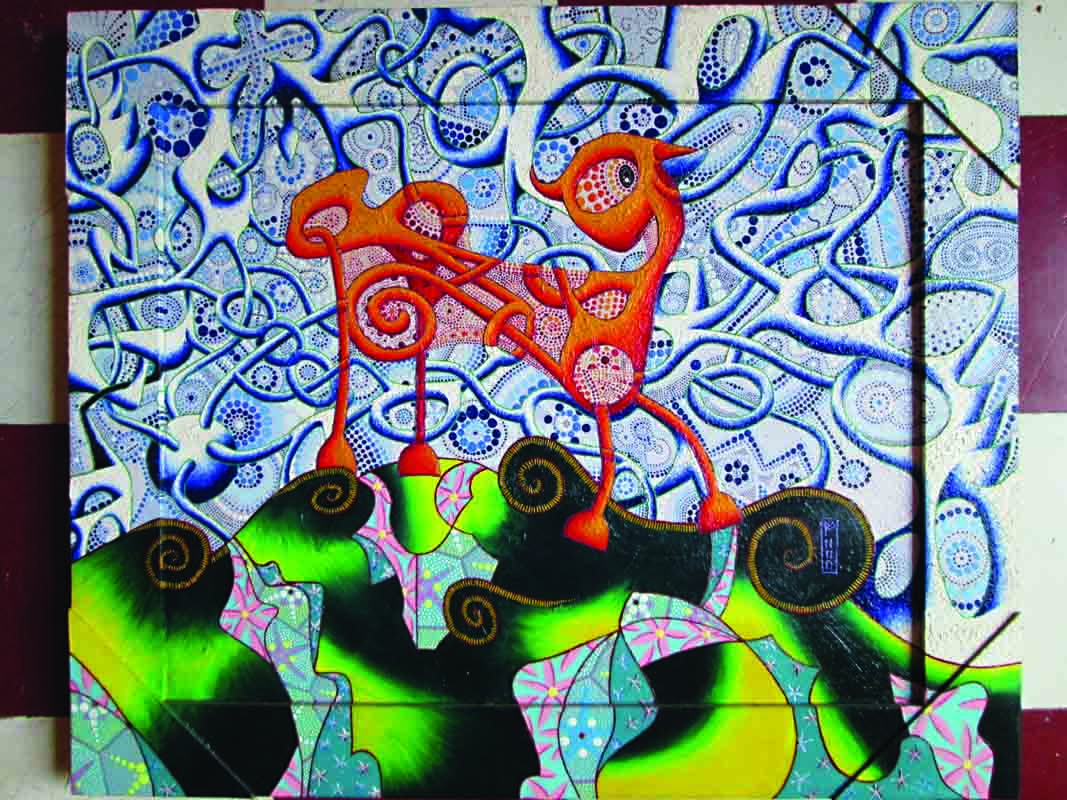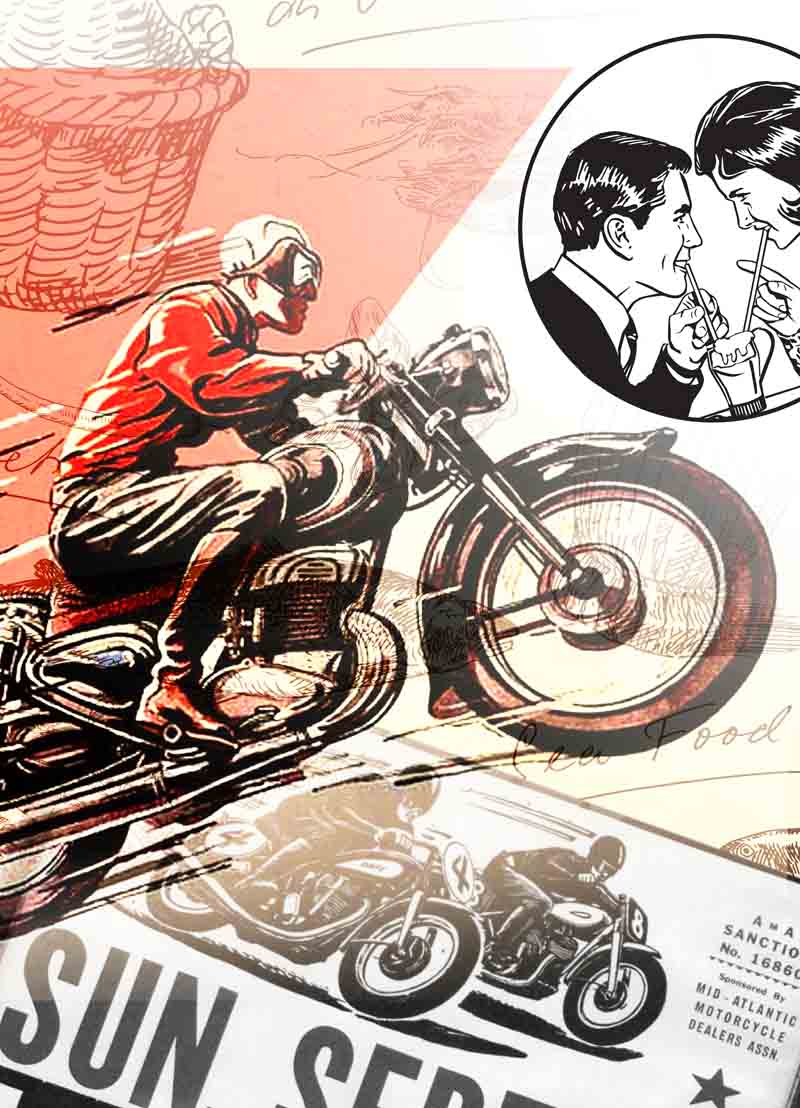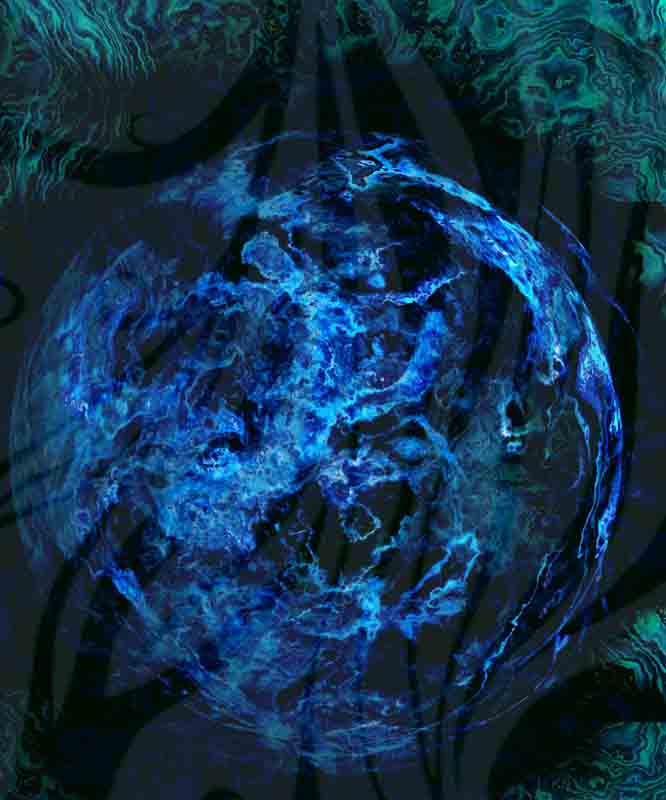A few decades ago, British author Douglas Adams wrote The Hitchhiker’s Guide To The Galaxy, a fantastical story about the world being unexpectedly demolished by hideous creatures from another planet. It was meant as a joke. Now, animal by animal, tree by tree, the world is being demolished around us – not by Vogons, but by us. After writing his book, which sold more than 14 million copies, Douglas decided it was time to think about the absurdities of life on Earth and what we’re doing to it. In 1989, he teamed up with zoologist Mark Carwardine and set off in search of weird and wonderful creatures dangling on the edge of extinction. Douglas later said of Last Chance To See: “My role, and one for which I was entirely qualified, was to be an extremely ignorant non-zoologist to whom everything that happened would come as a complete surprise.”
In 2001, the pair had been discussing the possibility of new adventures when Douglas suffered a heart attack and died. He was 49. Biologist Richard Dawkins dedicated The God Delusion to him, writing: “Science has lost a friend, literature has lost a luminary, the mountain gorilla and the black rhino have lost a gallant defender.” Celebrated comedian Stephen Fry, a close friend, had lived in Douglas’ house while he and Mark travelled the world and remembers “taking urgent phone calls to send maps and lenses to faraway places.” In 2008, 20 years after the original journey, Stephen joined Mark to find out what had become of the animals. It wasn’t just a search for creatures on the edge of extinction, but for the conservationists who risk their lives to protect them.
Southeast Asia has its own wildlife heroes – and their task is not an easy one. A week before Mark Cawardine arrived in Cambodia, five of the people he was due to work with were murdered by poachers. Inspired by the work of Douglas, Mark and Stephen, this is our tribute to some of the littlest-known-yet-most-heavily-hammered species of Southeast Asia and their equally intriguing and elusive human custodians.
King of the swingers:
Francois’ langur
The magnificently moustachioed Francois’ langur is believed by the Tay people to be children who lost their way in the forest and changed shape in order to survive. Once, more than 2,500 of them could be found scattered across 23 different countries, including China and Vietnam. Sadly, the Tay’s tradition doesn’t extend to other minority groups, who stalk langurs for the dining tables of Vietnam’s nouveau riche (their bone marrow is extracted for medicinal concoctions to feed the incessant black hole in China).
“They are easy to catch by patient hunters who seal up the entrance of sleeping caves for a couple of days after a family group has entered, then poach them in one foul swoop after the animals are in a weakened state, all withered and frail,” says Michael Dine, a technical adviser with the People Resources Conservation Foundation. “They are in effect a victim of their own habitat and ecology when it comes to human interaction.”
Hailing from Australia, Michael has been fortunate enough to encounter wild langurs – considered gods in Indonesian folklore – not just once but twice, “hearing their grunts and, on one particular occasion, watching a family group scramble across a vertical rock face towards a sleeping cave as the sun set. Watching langurs by the fading, last rays of the day: an ideal scenario for romance novelists!”
Working with communities in the remote forests of Vietnam, Dine learned that “the introduction of new ideas and technological innovation can be highly risky for people with limited livelihood strategies, that ‘seeing is believing’ is a golden rule and sitting down over a cup of green tea or drinking a skin full of wine (rice or maize, with various medicinal properties) to joke and share local hospitality are vital ingredients to developing trusting, workable relationships.” One of the most rewarding relationships is with this playful leaf monkey.
Today, about 1,500 langurs – named in honour of one Monsieur François, a French consul in China when he first observed them – can be found in small, scattered harems near the caves which serve as their sleeping quarters in weathered limestone hills. A noisy bunch, they careen through the treetops by day looking for leaves and fruits. When infants are born, they are cared for by their own mothers and unrelated babysitters or ‘aunts’.
Living fossil: kouprey
The northern plains of Cambodia were described in the 1950s by American explorer Charles Wharton as ‘one of the great gamelands of the world… second only to the African gamelands in game abundance’. The immense herds found included four species of wild cattle, of which one was the kouprey, Cambodia’s national mammal.
Discovered by science in 1937, the kouprey – Khmer for ‘forest bull’ – was described as ‘a living fossil’ and shared many characteristics with primitive oxen. Before biologists could learn more, disaster struck. “The kouprey was known to science for a quarter of a century before disappearing into the fog of war that laid waste to Indochina in the 1960s and ‘70s,” says Dr Hugo Rainey, a technical adviser with the Wildlife Conservation Society. “Very large numbers of soldiers and guerrillas armed with automatic weapons probably caused its demise. It was a majestic beast weighing nearly a ton with horns up to 80cm in length. Open deciduous forests mixed with dense evergreen forests provide ideal habitat for these species. If any kouprey remain alive, they may be found in these remote forests of northern Cambodia.”
One of the main drawbacks to being a kouprey, says Dr Rainey, is being “big and tasty”. When Wharton shot the first colour footage taken in the wild during a 1951 expedition, in areas frequently raided by armed Communists, he noted native hunters using ancient flintlocks and shooting at close range. His team estimated that about 500 remained. The following year, the adoption of a special resolution by the International Union for the Protection of Nature spurred hopes the government would establish sanctuaries for the kouprey. Sadly, hostilities within the region intensified and the plans were abandoned. The last confirmed sighting, by Wharton himself, was in 1962 – just 25 years after the kouprey was first discovered.
“Sadly, the only confirmed sighting of a kouprey in recent years has been the skull and horns offered for sale in local markets – at very high prices,” the World Wildlife Fund has said, but conservationists are reluctant to declare it extinct. Instead, they point out that such cattle are a vital part of Cambodia’s natural order. “Cattle are really, really important,” said Dr Rainey. “They do a lot of grazing; they’re food for tigers and wild dogs. They’re a core part of the ecosystem. If you don’t have those, you lose a lot of other species, including leopards.”
The exterminator: pangolin
This armour-plated pest controller looks more like a reptile than a mammal. The pangolin normally shuffles along on its knuckles, but can also climb trees like a caterpillar. Its pointed snout and long, sticky tongue fit perfectly into insect nests. As an adult, it will devour more than 70 million creepy crawlies a year, potentially saving a small fortune in extermination fees. When threatened, its only defence is to roll up into a ball (after aiming its bottom at would-be aggressors and spraying them with a foul-smelling secretion). That’s more than most people know about this shy, secretive creature. Despite being the most trafficked mammal on the planet, it remains largely a mystery to science. It is no stranger, however, to the superstitious.
“Carrying a pangolin’s tongue in your pocket, in some parts of Indonesia, will protect you from evil,” says Chris Shepherd, Traffic’s deputy director in Southeast Asia. “Really? Tell that to the pangolin.” Its luck certainly seems to be running out: populations are plummeting as the demand from Chinese apothecaries for ingredients such as scales and even unborn foetuses intensifies. The market for their so-called medicine is global, fuelled by baseless beliefs that it can aid longevity, ward off witchcraft and keep wild animals at bay. In 2007, one restaurant in Vietnam was found offering Te Te (pangolins) whole or steamed. They can even end up in bottles of wine.
“Pangolins are traded by the ton and breed very slowly,” says Shepherd. “This is the kind of situation that should be treated very urgently, but in most people’s minds it isn’t sexy and therefore few care.” It’s hard to know how many pangolins are left in the wild. Every year more and more end up in cooking pots, despite the best efforts of wildlife officials. In the space of just one week in 2008, Vietnamese authorities in Hai Phong seized 23 tons of pangolins – about 8,000 animals.
“They must be one of the easiest animals to catch, once you find them,” said Shepherd. “They have no teeth and their only real defence is to roll up into a ball – a ball that fits perfectly into a bag, unfortunately.” Undeterred, he has vowed to fight on and has even designed a pro-pangolin T-shirt, the slogan on which reads: ‘This is how we roll.’ For as poet Marianne Moore respectfully wrote in The Pangolin, ‘This near artichoke with head and legs and grit-equipped gizzard, the night miniature artist engineer is, yes, Leonardo da Vinci’s replica – impressive animal and toiler of whom we seldom hear.’
Burning bright: Sumatran tiger
At the turn of the 20th century, Dutch colonists reported that Sumatran tigers were so numerous and bold they would enter planters’ homes. Immortalised in the Indian proverb ‘Do not blame God for having created the tiger, but thank him for not having given it wings,’ this spectacular tertiary predator has long mystified man. Chinese druggists pedalling myths that their body parts have the power to cure certain ills have fuelled human greed and by 1978 the island’s tiger population had shrivelled to just 1,000, thanks to ‘traditions’ such as using eyeballs to treat epilepsy and whiskers to cure toothache.
“Who was the first person to think a tiger penis might be worth eating?” says Chris Shepherd, regional deputy director of Traffic. “Come to that, how long do people have to eat owl eyes before they realise their night vision isn’t like that of an owl? ‘Tiger genitalia will improve your sex life.’ Tigers have sex for seconds at a time: is that what people are going for? And if you want another gross example of wildlife used for magic, I once watched a ‘medicine man’ force fresh tiger crap down a mentally handicapped man’s throat in order to drive away evil. Mental pictures like that just don’t go away.”
Among the Sumatran tiger’s staunchest supporters is Debbie Martyr, who started working in Kerinci Seblat National Park in 1994 “with no background in conservation biology or zoology, thinking Habitat was a jolly useful shop and Landscape was what [English Romantic painter] Constable did”. Today, she heads the Fauna & Flora International (FFI) tiger programme she founded in Kerinci Seblat, where dwindling forests serve as a buffer against logging firms and ever-expanding human sprawl. Of the roughly 700 tigers still roaming wild, more than half are found here.
“The wild tiger, the ‘tyger, tyger, burning bright’ of myth, is a shadow of red, gold and white seen fleetingly in the forest gloom,” says Martyr. “This is an animal never in Sumatra referred to directly as a tiger by forest workers, but by names of respect for a species some believe represents ancestral spirits; described as ‘polite’, anxious to avoid contact with people. But you don’t have to see a wild tiger to feel its presence, the essence of wild nature. The forest falls silent, heavy with suspense; a dry twig snaps – the tiger’s way of saying ‘I am passing’ – and then it is gone and the cicadas and a million other insects start singing again. We are humbled, and perhaps that is the key: rather than a last chance to see, we should be looking for a last chance to make good, to be polite to tigers as an icon of wild nature, and to our planet as the tiger is polite to us.”
Corpse flower: Rafflesia Arnoldii
British botanist Joseph Arnold and statesman Sir Thomas Stamford Bingley Raffles, founder of modern Singapore, didn’t so much discover Rafflesia Arnoldii as borrow it from a Malay servant. It was Sumatra, the year 1818. Arnold died just a few days after the exchange, but ultimately won the race to scientifically identify what later became his floral namesake.
Considered by some to be an aphrodisiac, it is found only in Sumatra and Sabah and has long been a fascination of wildlife photographer Jeremy Holden. “It’s the biggest flower in the world: generally a metre, but I’ve had local people tell me one-and-a-half metres – and I believe them. It’s a parasite, a long white string that lives inside the body of a vine. It sends up marble-sized buds which burst through the vine and swell to the size of a cabbage. Almost nothing is known about the ecology of these things: how they travel, how they get into the body of the vine in the first place. Flies are the pollinators hence the corpse-like smell. It even looks like a piece of rotting meat: red and blotchy. It flowers 21 months after the first appearance of the bud. After all that effort, it takes about two days to fully open, then you have a day or two before it starts to crack, wither up and turn brown.
“There’s some idea their microscopic seeds might get caught in the feet of pigs. When they’re wandering, they might graze the bark of another vine tree and introduce the seed – that’s just a hypothesis. Because it’s a parasite, the cost to the vine is huge. Nothing that does that kind of work lives that extravagantly. I think of Rafflesia Arnoldii like a pirate: they dress up, spend loads of money and get drunk because they’re not working for it; they’re just stealing off other people. How sustainable that is, I don’t know. The forest is shrinking and no one knows what kind of area the rafflesia needs to sustain itself. You won’t find a vine which has flowers continuously for years. I can go to a vine I know has them and suddenly there’s no sign they were ever there, but there’ll be another vine I hadn’t noticed… and bang! They’re suddenly there. They could easy disappear without people knowing. Go see one now.”
Feathered dinosaur: cassowary
According to the Guinness Book of World Records, cassowaries are the most dangerous birds in the world. Part of the family that includes the now-extinct elephant bird, a three-metre monster described by Marco Polo in accounts of his journeys to the East during the 12th and 13th centuries, the cassowary – of which there are three species – is a large, flightless bird native to the tropical forests of New Guinea. The most common, the Southern Cassowary, is the third-tallest and second-heaviest living bird on Earth, outsized only by the ostrich and emu.
They look like the product of an unholy union between a turkey and a giant, and if you leave them alone they generally err on the shy side. But don’t even think about going near one brandishing a bottle of cranberry sauce: their bone-cracking, razor-clawed kicks are powerful enough to kill you. During World War II, soldiers stationed in New Guinea were warned to give them a wide berth, but despite the fact the cassowary’s call can be heard for up to five kilometres on a still night, several men fell victim to these beastly fowl.
“When they are young and ‘small’ – the size of a goose – dealers sell them as pets, usually to morons with private collections who don’t think very far ahead,” says Chris Shepherd, of Traffic. “I really wonder if any of the people who bring home their little lab-sized cassowary chick know what it’s going to turn into. Cassowaries, as you probably know, have three toes. Well, two toes and a butcher’s knife – that’s the one they use to kick you in the stomach.
“A friend of mine has a rescue centre in Indonesia with about 25 of them. They almost all have to be in separate enclosures and the enclosures constantly have to be repainted because these monsters kick the crap out of them. We’re trying to save them because they, like all the other animals no one cares about, are incredible. Look at a cassowary: feathered dinosaur! Amazing birds…”
